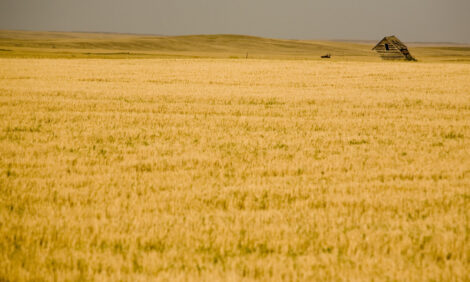



Slower Growth in NZ Dairy Expected
NEW ZEALAND - The New Zealand dairy industry has ridden a wave of growth, with milk production increasing by almost 50 per cent over the past decade. However constraints are expected to slow the rate of future growth, according to a new industry report.The report, NZ Dairy – From a torrent to a trickle, by agribusiness banking specialist Rabobank, says that with New Zealand emerging as the world's largest dairy exporter alongside the European Union, it has led many to question just how much more milk the country can produce.
Report author, Rabobank senior analyst Hayley Moynihan says the development of new dairy farms and processing facilities has been fuelled by a combination of good returns, increased capital investment and strong asset growth. “Over the next decade, growth will no longer be driven by increasing the number of dairy cows in the national herd, but by productivity improvements as farmers strive to extract greater production per cow,” she says.
The growth of milk and money
Over the past decade, Ms Moynihan says, the relative economic returns for dairy compared to other agricultural industries has largely driven the change in land use.
“The structural increase in the global milk price was behind much of the change in land use from sheep, beef and cropping operations towards dairy farms,” she says. “And this trend has seen a significant lift in production in the South Island, with the south now accounting for 36 per cent of national production, up from around 15 per cent ten years ago,” she says.
Ms Moynihan says growth in the sector was also underpinned by the readily-available access to credit.
“Dairy farmers were generally able to service a greater level of debt than their drystock or cropping counterparts, with capital asset growth historically providing the equity to build, or to leverage from, for further expansion.”
Constraints starting to bite
Looking forward, the Rabobank report says the factors underpinning recent growth in dairy will become less relevant over the next ten years, while new constraints will affect production. Ms Moynihan says that with New Zealand dairy operations becoming increasingly intensive, feed and interest costs have become embedded in production systems.
“While production is largely based on an extensive pasture-based system, farmers have increased output through growing more feed on existing or purchased land or by buying in supplementary feed and this has structurally increased their cost base,” she says.
“As a result, fertiliser, feed, wages and interest costs now comprise almost 70 per cent of net dairy cash income, up from 40 per cent in 1999/00.”
Ms Moynihan says these increased costs have reduced dairy producers' ability to weather a downturn in the market.
The tightening of environmental regulations is also seen as a constraint to future growth, and, while regulations vary by region, consent is increasingly required around nutrient use, effluent treatment and disposal, management of existing waterways, stock wintering policies and water usage.
Outlook – from a torrent to a relative trickle
New Zealand milk production is likely to grow at a far slower pace over the next decade than has been evident over the past two, the Rabobank report says.
“While forecasted growth of 30 per cent over the next 10 years is considered rapid by most industry measures, it will be pedestrian by recent New Zealand standards,” Ms Moynihan says.
“The heady days of more than 300 new farm conversions nationally in a single season are over. While a window of opportunity is likely to remain for a while yet in Canterbury on the back of their irrigation developments, future growth is likely to come from increased production per cow.”
The industry is also expected to mature in other ways, as economies of scale through the amalgamation of smaller farms continues to occur, as well as the "corporatisation" of dairy farms.
Ms Moynihan says that the changes in the dairy industry will require a shift in focus.
“Farmers will need to look at how to squeeze productivity gains from their existing herd, as well as ways to control their costs,” she says.
The decline in production growth will also present challenges for those further up the supply chain. “Processors and exporters will be facing a milk pool that is nearing its limits as well as, the loss of cheap raw material, which will see them further define their strategies,” she says.
This will also have ramifications across the global dairy market.
“Importers reliant on New Zealand product are likely to seek greater breadth in product origin, while competing exporters may see opportunities if New Zealand exports are unable to keep pace with growing demand.”
Ms Moynihan says the timing of the slowdown in New Zealand's milk volume growth may well prove complementary to global market dynamics, as additional production is expected out of the EU as their quotas are removed in the latter part of the decade.
TheCattleSite News Desk


